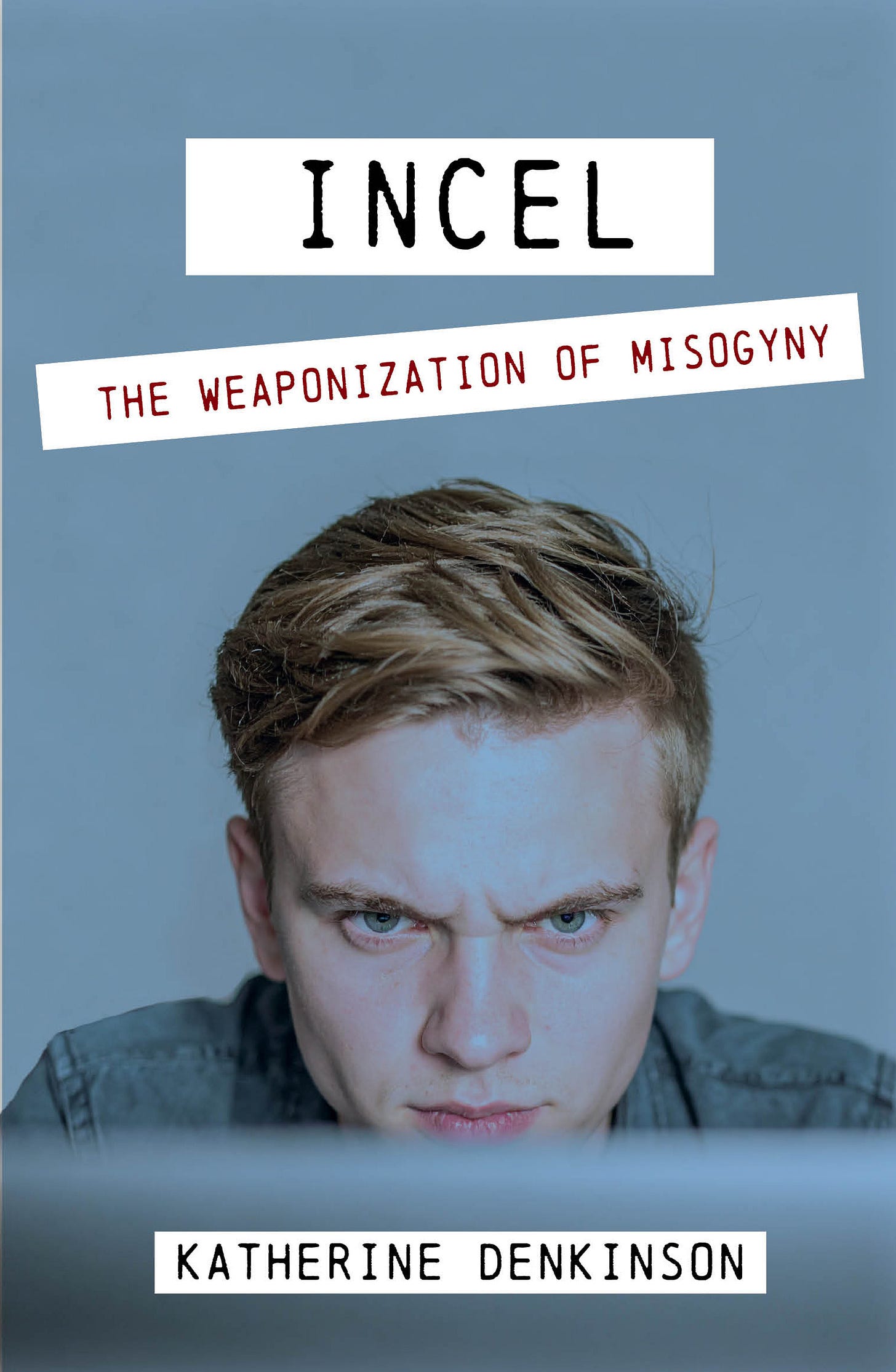Exclusive: How we made incels
In this exclusive extract from her new book, journalist and mental health worker Katherine Denkinson examines how inceldom emerged from loneliness, lost community, and political failure.
In this snippet from her new book INCEL: The Weaponisation of Misogyny, journalist and mental health worker Katherine Denkinson traces how a fringe online subculture of loneliness and resentment evolved into one of the most disturbing movements of the last decade. Drawing on years spent studying incel spaces and supporting people in crisis, she unpicks how disconnection, poor mental health support and political neglect have created fertile ground for misogyny to thrive.
This weekend, paid subscribers to The Lead can listen to Zoe Grunewald’s full conversation with Katherine. Make sure you’re subscribed and keep an eye on your inbox.
On a balmy California evening in May 2014, a twenty-two-year-old student at Santa Barbara College emailed a 137-page, hate-filled manifesto to multiple people including his parents.
Writing that “all of [his] suffering on this world” had “been at the hands of humanity, particularly women”, he claimed to have been “cast out and rejected, forced to endure an existence of loneliness and insignificance ... because the females of the human species were incapable of seeing the value in [him]”.
Repeating the sentiment in a seven-minute YouTube video, he promised a “day of retribution” against his perceived enemies.By the end of that day, seven people were dead, including the student himself. He had driven through his Isla Vista community and opened fire at random groups of people, before ultimately shooting himself in the head. His name was Elliot Rodger and his actions turned him into the poster-boy for an obscure, online community known as incels.
[...]
In the ten years since Rodger took this hateful ideology mainstream, there have been multiple killings attributed to incels, plus countless articles, investigations, and op-eds exploring their motivations. Whilst the initial exposure raised awareness of the movement, the continued moral panic has all but demolished the word’s original meaning. Rather than referring to a small subset of men, we now have a situation where all violent misogynists (and many non-violent, socially awkward men) are labelled incels whether they ascribe to the ideology or not.
After spending eight years in incel spaces, fifteen years working in mental health, and a plethora of conversations with those affected by incel misinformation, it is time to change the narrative. Incels did not emerge from a social media chrysalis raging against the world. They are real people, not digital boogeymen, and, while the responsibility for incel attacks lies solely with the men who commit them, prevention requires a radical rethink of our societal approach.
[...]
Over the last decade, ‘incel’ has become the go-to terminology when discussing violent misogyny, and incels themselves glorify those who die or get killed in the process of carrying out incel attacks, referring to them as ‘saints’. However, it is clear from decades of crime statistics and related academic studies that incels did not invent the concept of misogynistic violence.
Research from the Office of National Statistics [ONS] shows that one in seven women have been stalked and their study included data from 1999 which showed that 76 per cent of women who were killed by a former partner were stalked first. Historically speaking, men who can neither be with the woman they want nor control the woman they’re with have found
multiple, usually violent, ways to punish women as a whole. The labelling of these men as incels is becoming more common, but the number of actual incel attackers is far lower than the number of attackers labelled ‘incels’. The reasons for this are complicated and are heavily skewed by both social media and clickbait headlines.
The viralising and subsequent misinformation that surrounds reporting of these attacks on social media has ensured that crimes labelled ‘incel’ now fall into three distinct subgroups.
Firstly, there are crimes committed by young men directly inspired by the incel ideas they have encountered online. Secondly, there are men committing crimes who have labelled themselves ‘incel’ because it guarantees media attention. In the third group (which is by far the most prevalent) are those engaging in misogynistic violence without any links to incel groups or claims of being incelibate, who get labelled as such anyway by social media users and the press.
[...]
When attacks happen, it is easy for us all to dive into the worst-case scenario and add to the noise, but, as the research of both myself and others has shown, incels are not a global network planning the mass murder of every woman on the planet. As we have already seen, many ‘incel attackers’ from the last ten years were either already suffering from mental ill-health when they found the community, adopted the label to ensure notoriety, or had the label erroneously conferred upon them after the fact.
Their individual motivations were multi-faceted and complex, and none joined the incel community as fresh-faced teens only to be transformed into raging killers. They were already lost, angry young men and a lack of support left them looking for help in all the wrong places. Incel spaces simply provided them with an ‘enemy’.
While this in no way excuses acts of mass violence and should not be used to lessen their impact, it is the necessary starting point if we intend to prevent further violence from occurring.■
INCEL: The Weaponisation of Misogyny by Katherine Denkinson is published on 14 November by Aurora Metro Books.






Fuck you and your moral panic, stupid bitch
Katherine denkinson is an ugly grifting cunt